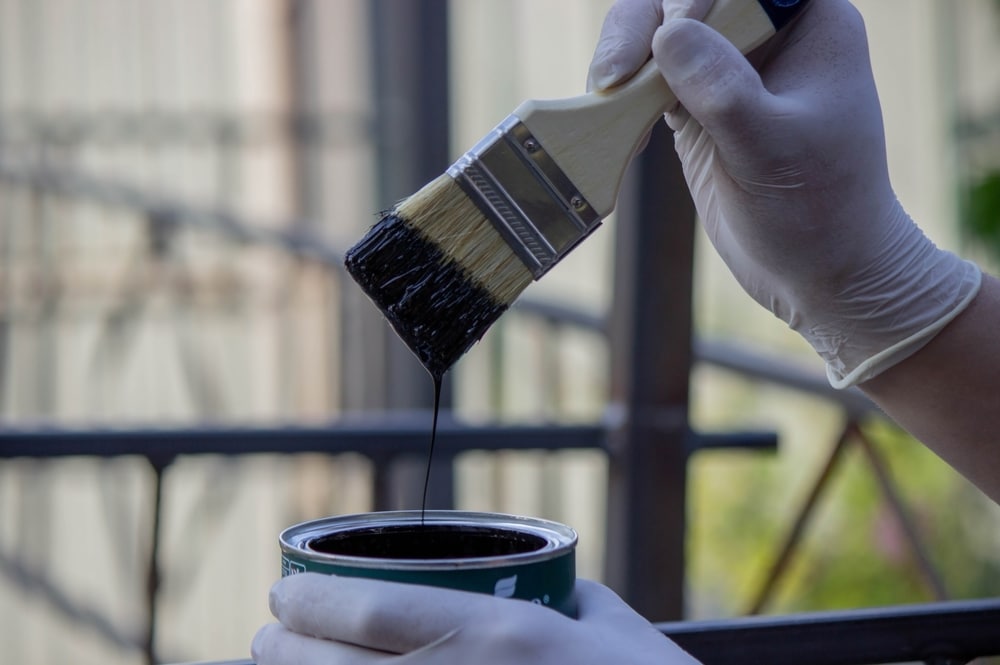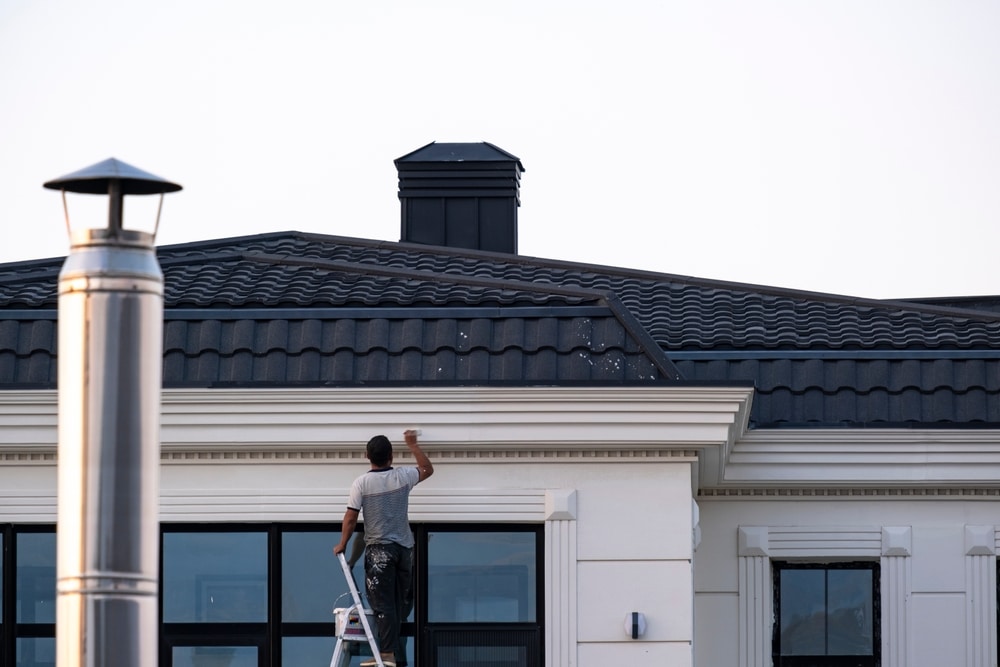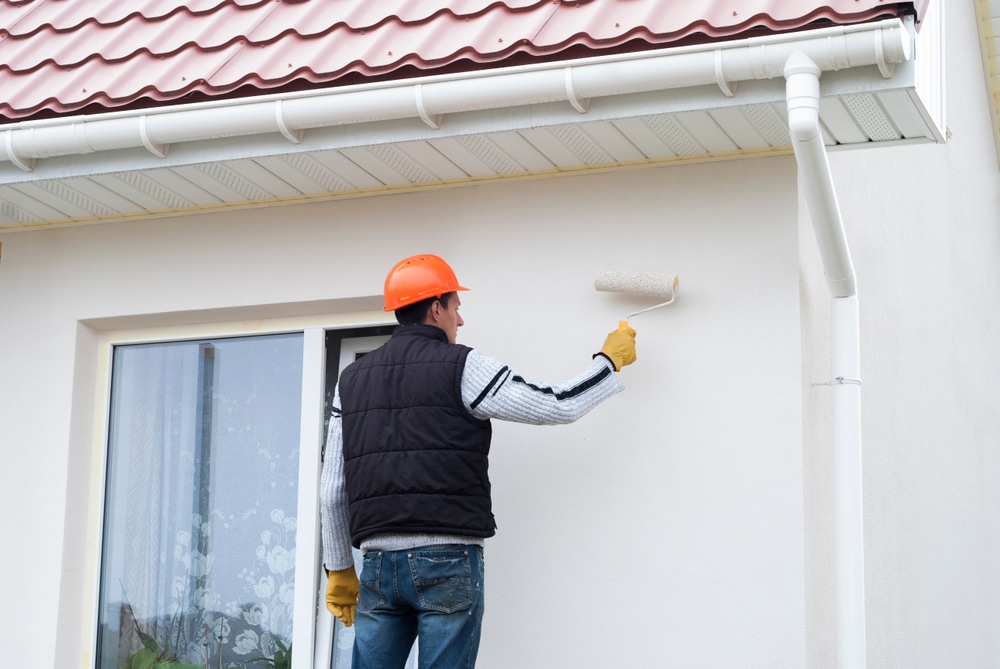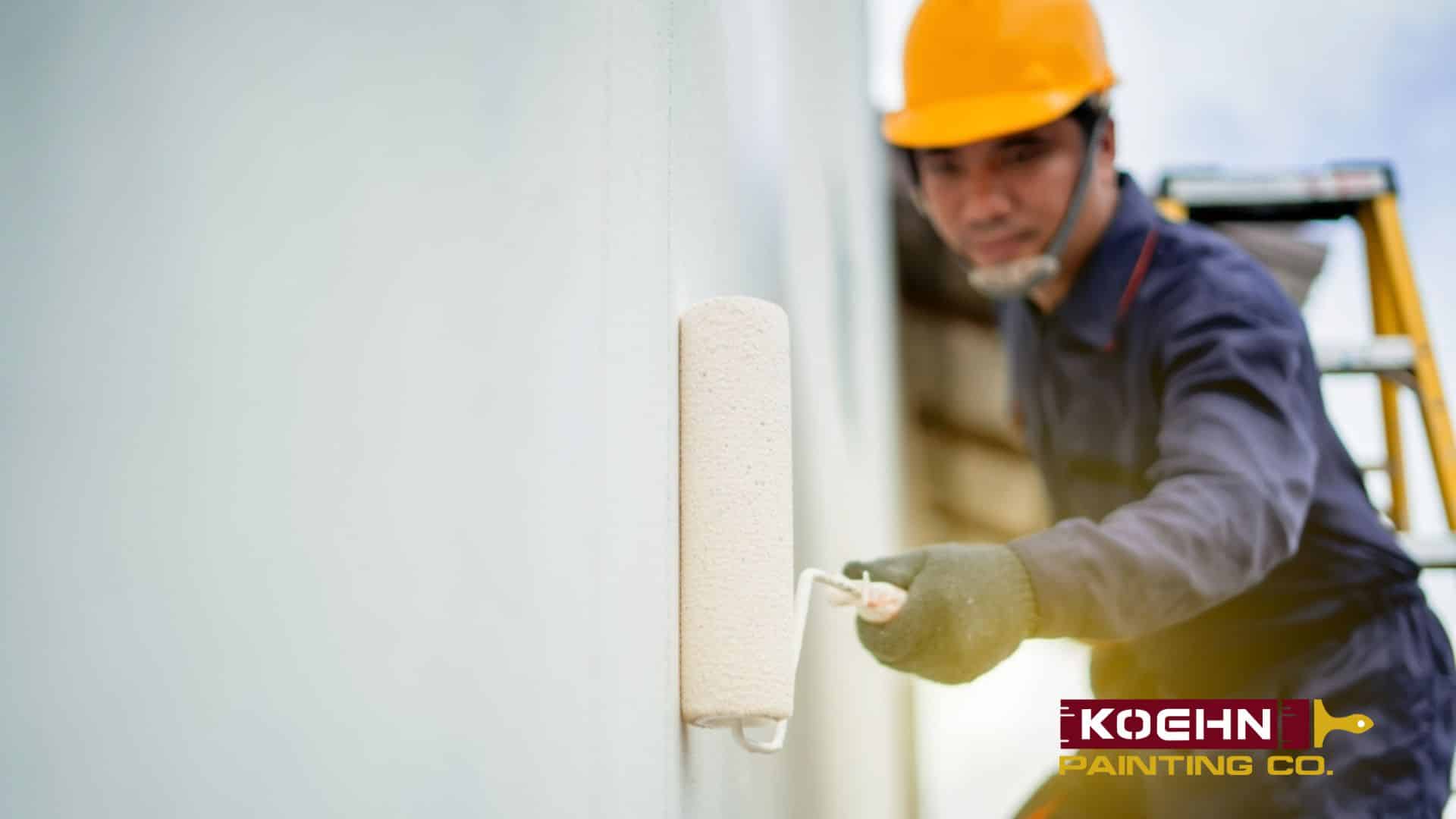Table of Contents
ToggleWhen you think about how to find a painter, you know you’re looking for more than just color. You’re looking for someone you can trust.
The right paint job can increase your home’s value, protect it from weather damage, and completely change how you feel when you walk through the door. But finding the right professional? That’s where most homeowners run into trouble. With the flood of ads promising “fast, cheap, flawless” work and the uncertainty of who’s actually qualified, the process can feel like a guessing game.
There are over 230,000 painting companies operating in the U.S., each claiming to be the best in the business. With that much competition, knowing how to distinguish genuine professionals from quick-contract amateurs can save you thousands of dollars and a lot of stress. A reliable painter offers more than steady hands; they provide accountability, craftsmanship, and respect for your home.
Consider what’s truly at stake: your time, safety, and your home’s finish. Professional painters have the right tools, crew size, and experience to complete the job efficiently without the chaos of weekend-long DIY projects. They know how to handle prep work, surface repairs, and safety standards that most homeowners overlook until it’s too late.
The idea here is to break everything down, step by step. To help you clearly define your project, find trustworthy painters, spot common red flags, and interpret estimates like a pro. Then, you’ll know exactly what questions to ask and how to confidently hire someone who will make your home look its best, without hidden costs or unfinished edges.
Start Smart: Define the Project Before You Call Anyone
Before calling contractors or searching online, take a step back and clarify what you really need. The best painting results don’t start with color charts; they start with planning. When you define your project’s scope early, you save time, avoid misunderstandings, and get quotes you can easily compare side by side.
Perhaps you’re dealing with faded exterior siding that has suffered from the weather, or maybe your living room just needs a refresh after years of use. Either way, clarity is your biggest advantage. Think of this as your pre-painting checklist—the groundwork that transforms a vague idea into a professional-grade plan.
Here’s what to outline before you make a single call:
- Interior or exterior: Not every painter specializes in both. Walls, trim, ceilings, cabinets, decks—each requires different materials, prep time, and expertise.
- Timeline and seasonality: Painting is seasonal work. Exterior jobs depend on temperature and humidity, so booking early in spring or late fall often means better availability and pricing.
- Budget considerations: A professional quote will include not just paint and labor but also surface prep—patching, sanding, priming, and caulking. Prep work can affect cost as much as the paint itself, but skipping it is what separates a durable finish from one that peels in a year.
- Add-on services: Many companies now offer extras like drywall repair, cabinet refinishing, or staining, which can save you the trouble of hiring separate contractors.
A little detail now leads to better results later. When you clearly specify what you’re asking for—such as which rooms, surfaces, and your level of prep—you’ll receive accurate estimates instead of vague promises. This results in a smoother process, more precise bids, and a finished project that looks as professional as it should.
How to Spot Reliable Painters

Once you’ve defined your project, it’s time to find the people who can actually bring it to life. And here’s the (kind of obvious) truth: not all painters are the same. The difference between a smooth, lasting finish and a frustrating redo often comes down to one thing: hiring reliable painters who take their craft seriously.
Finding them starts with knowing how to find a painter who checks every professional box, not just the one that says “lowest price.”
A reliable painter is more than someone who shows up with a brush. They’re a licensed, insured professional who respects your home, your time, and your budget. They follow a process, communicate clearly, and take accountability for the results. Here’s how to separate the pros from the rest:
1. Check Their License and Insurance
Before signing anything, ask for proof of licensing and insurance, and verify it.
- Licensing ensures the painter meets local and state requirements for residential or commercial work. It’s your safeguard against fly-by-night contractors who might vanish mid-job.
- Insurance protects you from financial risk. Every professional should carry general liability insurance (to cover accidental property damage) and workers’ compensation (in case someone gets hurt on your property).
If a contractor hesitates or gives vague answers when you ask for proof, that’s your cue to walk away. As the pros say, “an ounce of prevention is worth a gallon of paint”.
2. Experience Counts (And So Does Stability)
Years in business matter. A company that’s been operating for five, ten, or twenty years has likely built systems for quality control, safety, and customer service that new operations simply don’t have. Seasoned professionals have weathered economic ups and downs and still stand by their work. That kind of stability is one of the strongest signs of reliability.
Look at Their Real Work, Not Stock Photos
When evaluating reliable painters, request a portfolio of recent projects, ideally in homes similar to yours. Don’t settle for a gallery filled with glossy, generic stock photos. Ask for:
- Before-and-after pictures of interiors or exteriors they’ve completed.
- The addresses of a few past clients (many homeowners are happy to let you drive by).
- Details about the materials and finishes used.
True professionals are proud to show their craftsmanship and can speak confidently about their process.
4. Read Reviews Like a Detective
Online reviews can be gold—or noise—depending on how you read them. Platforms like Google, Yelp, or Nextdoor provide insight, but you’re looking for patterns, not perfection.
- Do multiple reviews mention punctuality or clean job sites?
- How recent are the comments?
- Are there consistent complaints about communication or missed deadlines?
Reliable painting companies encourage feedback and address concerns publicly, which shows accountability and confidence in their service.
A little due diligence now prevents a world of problems later. When you’re figuring out how to find a painter, don’t be shy about asking for proof—licenses, insurance certificates, references, even photos. Reliable painters will appreciate your thoroughness; the unreliable ones will make excuses. That’s how you know you’ve already made the right call.
Contact us here if you would like to find the best painting contractor for your residential or commercial painting needs.
Smarter Ways to Find House Painters Near Me

When you type “house painters near me” into Google, your area explodes with options. But most of those are names—not necessarily reliable painters. You want a strategy that not only surfaces local talent but helps you quickly separate the serious pros from the “also-rans.” Here’s how to do it smartly, efficiently, and with far less guesswork.
Going local gives you strategic advantages that distant contractors can’t match:
- Climate & local conditions knowledge: A painter in your region knows how humidity, sun, freezing, or rain affects finishes. They’ll choose paints and application techniques suited to your specific weather.
- Lower travel overhead: Local crews don’t have to charge you extra for long drive times, so the rates tend to be cleaner and more competitive.
- Faster responsiveness: If change orders, touch-ups, or problems arise, a nearby contractor can handle them more quickly than someone traveling from out of town.
- Accountability in your neighborhood: Local painters live by reputation. Word-of-mouth, HOA oversight, and future referrals matter. They have more skin in the game compared to fly-by-night operators.
Because of these advantages, when you’re serious about how to find a painter you can trust, your search should lean local by default.
Visibility Is Credibility: Where to Look Locally
Here are the places and strategies that actually help you find reliable painters in your area—beyond just Yelp or Google Reviews (which you’ve already vetted):
- Paint supply and hardware stores: Visit your local Benjamin Moore, Sherwin-Williams, or family-owned paint shop and ask, “Who are the best painters in town?” Many painters buy from these stores and leave business cards there—more importantly, the staff often know which contractors are professional and which are unreliable.
- Local trade groups & contractors’ associations: Sometimes regional “painters’ guilds” or business associations maintain directories of vetted service providers. These may require members to meet basic standards, giving you a built-in filter.
- Community bulletin boards & neighborhood groups: HOA newsletters, neighborhood Facebook groups, Nextdoor, or local forums often have service recommendations. Someone near you just got their siding done—they can tell you who to call (or avoid).
- Drive-by reconnaissance: Simply drive through nearby neighborhoods looking for recent paint jobs you like. If you see quality work, save a note on your phone: “Painter for 123 Maple Street.” Later, ask the homeowner for their contractor referral.
- Municipal permit records: For larger paint jobs, local government offices (city or county) often have records of permits pulled by contractors. You can sometimes see which painting companies are doing serious work in your ZIP code.
When you combine these visibility tactics with your previous criteria (license, experience, portfolio), you’ll be far more precise in your shortlist.
Now, You Shortlist
When you’ve accumulated a list of 5–10 local names, use this mini-checklist to narrow it to your top 3–5:
- Project alignment: Choose only those who have experience with your type of work—exterior, interior, cabinets, decks, etc.
- Past projects near you: If one has painted homes in your neighborhood or against similar siding/materials, that’s a huge plus.
- Compare quotes apples-to-apples: Use the same scope when requesting bids to accurately compare cost, prep work, warranties, and materials.
- Evaluate communication: Who answers your calls promptly? Who asks clarifying questions? The contractor who treats your inquiry as important is more likely to handle your job carefully.
- Ask the right questions: When you meet them, ask “Is it cheaper to hire a painter or do it yourself?” and “How do you find a good painter?” to test how they respond. A strong answer will show they understand tradeoffs and can justify their pricing.
If you ask us:
- Is it cheaper to hire a painter or do it yourself? It’s tempting to DIY to save money. But the hidden costs—equipment, wasted materials, mistakes, rework, time—often outweigh the labor cost you might pay a pro. A seasoned contractor will break down the numbers for you and show exactly where value comes from.
- How do you find a good painter? The good ones will explain their process: prep work, permit handling, safety standards, warranties, etc. If they answer confidently and transparently, that’s a strong signal you’re dealing with someone professional.
And, of course, always, even after you’ve narrowed choices, you still want to reduce risk. Here’s how:
- Request a brief list of recent clients in your area and contact them directly.
- Request a detailed written contract before any work begins (scope, cost, timeline, change order procedure, cleanup, warranty).
- Ask for proofs first: license, insurance certificates, and references—and verify them.
- Stagger payments: don’t pay the full amount upfront. Many professionals ask for a small deposit and then milestones.
By combining geographic awareness, smart visibility tactics, careful shortlisting, and risk mitigation, you’ll greatly increase your chances of finding a painter who delivers results without regrets. And when you’re done, you’ll be able to say you didn’t just find a painter, you found the right painter.
Now You Know How to Find a Painter

By now, you’ve learned that understanding how to find a painter isn’t just about scrolling through names or clicking the first ad that pops up. It’s about making informed decisions, choosing reliability over shortcuts, and quality over quick fixes. A great paint job doesn’t just change the color of your walls; it changes how you experience your home every day.
The right professional provides structure, consistency, and peace of mind. They’re insured, licensed, and open about every detail, from preparation to pricing. They’ll walk you through materials, explain their process, and ensure you know exactly what to expect before the first drop of paint hits the wall.
If you’ve followed this guide, you’re already ahead of most homeowners. You’ve defined your project, spotted reliable painters, understood local strategies, and learned how to compare estimates like a pro.
You know how to read between the lines of marketing promises and focus on what truly matters:
- Experience
- Accountability
- Craftsmanship
So the next time you ask yourself how to find a painter who won’t just meet expectations but exceed them, remember this: it starts with preparation and ends with partnership. The best painters don’t just work for you, they work with you, transforming your vision into something built to last.
FAQs Section
How do you find a good painter?
Ask for proof of license and insurance, review real project photos, and choose painters with consistent reviews and a stable track record.
How much is a painter per hour?
Professional painters typically charge $40–$80 per hour, depending on region, experience, and job complexity.
Is it cheaper to hire a painter or do it yourself?
DIY may seem cheaper upfront, but pros save you on materials, equipment, and costly rework—delivering a longer-lasting finish.
How much does a painter charge per room?
Expect $300–$800 per room on average, depending on size, prep, and paint quality.
Is it worth paying a professional painter?
Yes. A pro ensures durability, safety, and a polished look that can boost resale value—something DIY rarely achieves.
How much does it cost to paint a 4-bedroom house?
Full interior jobs typically range from $4,000–$10,000, depending on square footage, surface prep, and finish choices.
Can you negotiate the price with a painter?
You should base it on scope or materials, not on unrealistic discounts. Professionals value transparency more than haggling.
What is the best time to paint a house?
Mild, dry weather—typically spring or early fall—offers the best conditions for adhesion and drying.
How do painters calculate costs?
They factor in labor, materials, prep time, travel, and surface condition, then provide a detailed written estimate.
Discover the Koehn Painting difference – contact us today for a free estimate and step into a vibrant, freshly painted home!




